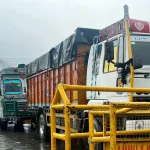Solar, wind, and other forms of renewable energy (RE) excluding hydro and nuclear power accounted for 30 percent of total power generating capacity and about 14 percent of total power generated in 2022-23. RE was the second largest after coal in terms of both, power generation capacity and power generation. In the coming decades, the share of RE capacity and power generation is expected to increase exponentially. This shift away from coal towards RE for power generation is presented by the media and academia as a transition to a lower-cost system that will reduce and eventually eliminate emission of carbon and other local pollutants and also serve as a means to reduce electricity tariffs and renew Indian power utilities (distribution companies or Discoms). The underlying argument is that once Discoms replace the expensive long-term power purchase agreements (PPAs) for coal-based power with short-term, flexible and low-cost PPAs for RE-generated electricity, not only will it reduce electricity tariff benefitting consumers but also wipe out financial woes of Discoms. Basic electricity economics and market-oriented Discom restructuring efforts may undermine these expectations. The economics of electricity is shaped by the laws of physics. Laws of electromagnetism that capture the physics behind the generation of electricity limit storage, transmission and flexibility. Since storage and flexibility (available in primary energy forms such as oil) are complex, electricity must be seen as a heterogeneous good in time and space. In plain language, this means that one cannot say that ‘electricity is electricity’ in the same way we would say that ‘milk is milk’. In India electricity generated during peak demand time of 6 am or 6 pm is more valuable than electricity generated at 12 am or 12 pm when demand is low. Electricity generated by solar panels in Delhi which is a large and concentrated load centre has a different value from electricity generated by similar solar panels in a desert in Rajasthan. In both cases, the short-run marginal cost of electricity generated is close to zero but the marginal value of electricity generated in Delhi is much higher. Electricity that can be switched off and on at will has greater value than electricity that cannot be switched on and off easily. The same is true at the upstream end where different primary sources such as coal and solar produce different goods with different heterogeneity and marginal value. These attributes are not taken into account in evaluating the relative merits of electricity with different marginal values and costs. This contributes to the narrative that the low-carbon transition is also a transition towards a low-cost system. If RE power developers are reliant exclusively on market forces to recover all their costs, they are very likely to lose money. The case of decentralised (off-grid) solar power generation projects operating in rural areas of India validates this claim. Even in cases where the project receives capital funding in the form of a grant or aid, the tariff for stand-alone solar power with storage is comparable or higher than that for diesel-based generation. Dharnai village in the district of Jehanabad in Bihar was declared to be energy independent in 2014 when a 100-kW (kilowatt) solar micro-grid project set up by Green Peace started supplying electricity to over 2000 people in the village. Today the power station is a “makeshift” cattle shed. The solar energy micro-grid introduced in the remote islands of Sundarbans by the Government of West Bengal in partnership with the private sector was hailed as an example for the rest of the country a decade ago is now abandoned. Most of the rural poor households shifted to dependable and convenient grid-based electricity in both cases. The poor economics of stand-alone solar projects that do not have the backup of grid-based electricity or the strength of financial aid and the economics of the poor that place greater value on convenience and cost explain why less than 3 percent of solar projects operating in India are off-grid projects. Grid-connected projects free-ride on the system designed for conventional power that has sufficient capacity to meet the highest (peak) demand and is also flexible enough to change output of generation in response to changes in demand. The fate of off-grid RE projects suggests that the transition to low-carbon electricity is not a move towards a lower-cost system. It also shows that recovering the additional costs involved in RE power systems from the taxpayer or the ratepayer (electricity consumer) is likely to be difficult in India. In Europe and California where the share of RE power is high, the higher costs are passed on to consumer bills which have been going up even though wholesale market prices have been going down. This has resulted in a gap between market prices and underlying costs and a gap between wholesale market prices and consumer prices.
Renewable Energy Issues in India

Sign Up For Daily Newsletter
Be keep up! Get the latest breaking news delivered straight to your inbox.
By signing up, you agree to our Terms of Use and acknowledge the data practices in our Privacy Policy. You may unsubscribe at any time.
Leave a Comment Leave a Comment
Stay Connected
Latest News
Recent Posts
- Delhi Airport issues passenger advisory amid inclement weather forecast
- Shri Mata Vaishno Devi Shrine Board refutes ‘negligence’ claims on pilgrim tragedy
- Jammu-Srinagar Highway Shut for fourth Day, Over 2,000 Vehicles Stranded
- 22 people killed, including four children in Russian strike on a residential building Kyiv: Ukrainian President Volodymyr Zelenskyy
- “Like automobiles, India, Japan can recreate same magic in batteries, semiconductors,” PM Modi says







